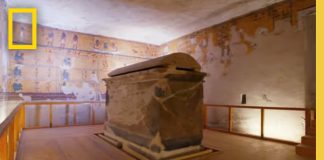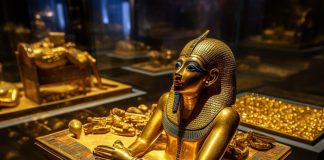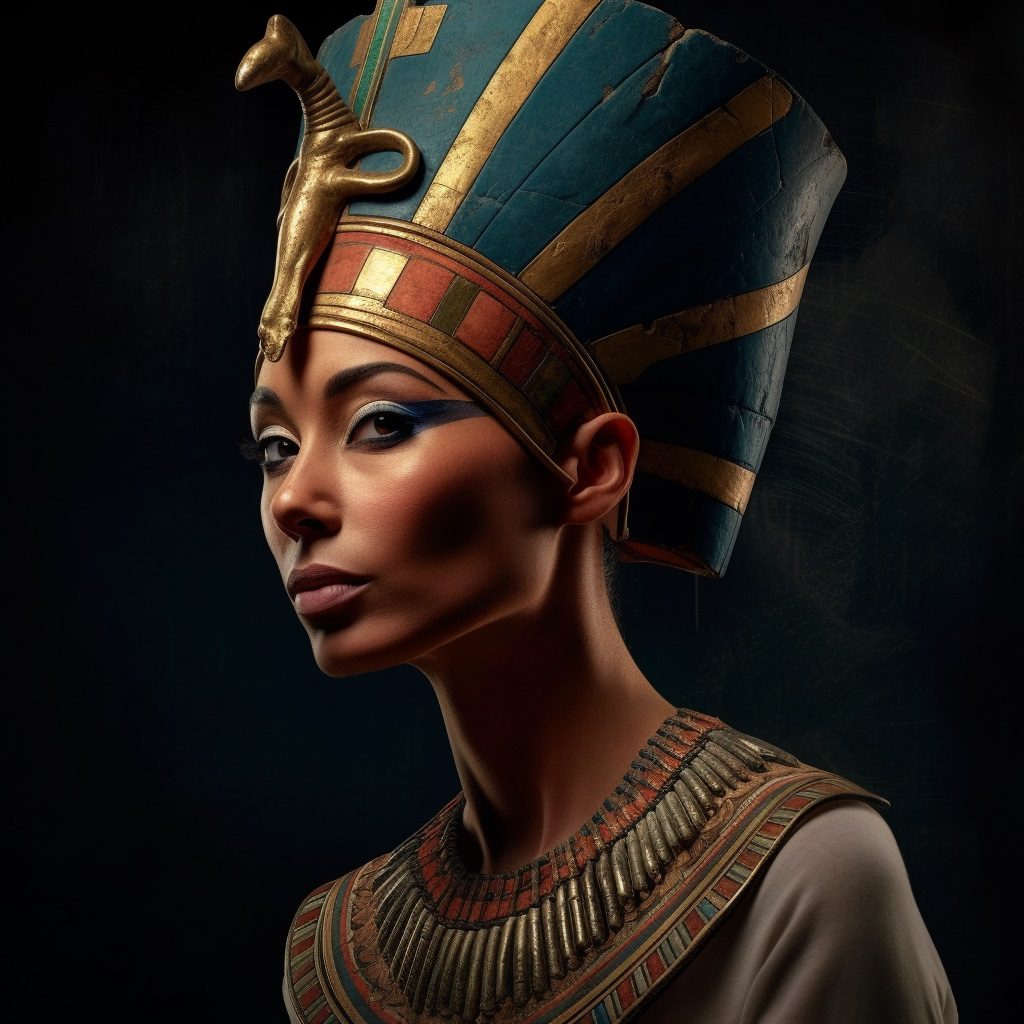
The enigma surrounding Nefertiti Mystery Egypt continues to captivate historians and nature lovers alike. Queen Nefertiti’s life has been an enigma to historians and nature lovers for centuries, adding further allure to the mystery of Ancient Egypt.
In this blog post, we will delve into various aspects of her life, including the significance of her capital city during her reign alongside Pharaoh Akhenaten. We’ll also discuss the famous bust that immortalized her beauty and its importance in understanding Egyptian art.
Furthermore, we will explore Nefertiti’s marriage to Akhenaten and their accomplishments as rulers while comparing her influence on policy-making with other prominent queens from antiquity. Finally, we will examine theories surrounding Nefertiti Mystery Egypt – particularly focusing on the mysterious disappearance of this iconic queen and the ongoing search for her tomb.
The Mystery of Nefertiti in Ancient Egypt
Imagine a bustling city, home to 50,000 people and the seat of power for one of ancient Egypt’s most enigmatic queens – Nefertiti. Today, this once-thriving metropolis lies in ruins, but its secrets could hold the key to unlocking the mysteries surrounding Queen Nefertiti’s life and reign.
The Location and Significance of Nefertiti’s Capital City
The capital city during Nefertiti’s time was known as Amarna, situated on the east bank of the Nile River. Established by her husband, Pharaoh Akhenaten, around 1346 BCE, Amarna served as both their residence and religious center. The couple transformed Egyptian society by introducing a new monotheistic religion centered around worshipping Aten – an aspect of the sun god Ra. This radical shift made Amarna not only significant politically but also spiritually.
Archaeological Findings from Amarna
Excavations at Amarna have revealed numerous artifacts, providing valuable insights into daily life during Nefertiti’s rule:
- Talatat blocks: These limestone blocks were used in constructing temples dedicated to Aten; they offer clues about how worship practices changed under Akhenaten and Nefertiti.
- Akhetaten Royal Tombs: Although none belong to Queen Nefertiti herself, these tombs contain inscriptions that shed light on royal family dynamics during her reign.
- The Great Palace: This grand structure, adorned with beautiful reliefs and inscriptions, served as the residence for Nefertiti and her family.
Despite these discoveries, much about Queen Nefertiti remains shrouded in mystery. Her tomb has yet to be found, leaving archaeologists with many unanswered questions regarding her life and ultimate fate.
The Mystery of Nefertiti’s Disappearance
Nefertiti’s disappearance remains one of the most intriguing mysteries in Egyptian history. Some believe that she ruled Egypt as a female pharaoh, much like Hatshepsut, who ruled before her. Others speculate that she died and was buried in a tomb that has yet to be discovered. Some even suggest that she may have fled to northern Syria, where the Mittani kingdom was located, during Akhenaten’s reign.
The Legacy of Nefertiti
Despite the mystery surrounding her life and disappearance, Nefertiti remains one of the most iconic figures in Egyptian history. Her beauty and power have captivated people for centuries, and her legacy lives on in the many artifacts and monuments that have been discovered throughout Egypt. From the Great Palace in Amarna to the treasures found in King Tutankhamun’s tomb, Nefertiti’s influence can be seen throughout Egyptian history.
As we continue to explore the ancient ruins of Amarna and other sites throughout Egypt, we may one day uncover the truth behind Queen Nefertiti’s mysterious life and disappearance. Until then, her legacy will continue to inspire and intrigue people around the world.
Key Takeaway:
The article discusses the mystery surrounding Queen Nefertiti’s life and reign in ancient Egypt. It explores her capital city of Amarna, archaeological findings from excavations, her disappearance, and her legacy that continues to captivate people around the world.
The Famous Bust of Nefertiti
Discovered in the workshop of sculptor Fatmose, Queen Nefertiti’s bust is an iconic symbol representing her beauty and power. As one version of her official portrait, it offers valuable information about how she was perceived during her time as queen.
Discovery and History Behind the Bust
In 1912, a team led by German archaeologist Ludwig Borchardt unearthed this stunning artifact from the ruins of Amarna. The limestone sculpture portrays Nefertiti with a tall blue crown adorned with gold bands and colorful gemstones. Her visage boasts well-defined cheekbones, plump lips, and almond eyes surrounded by graceful arched brows.
This exquisite piece has since become synonymous with ancient Egyptian artistry; however, its journey to fame was not without controversy. After being brought to Germany for further study and conservation efforts under questionable circumstances following its discovery, the bust currently resides at Berlin’s Neues Museum despite ongoing disputes over rightful ownership between Egypt and Germany.
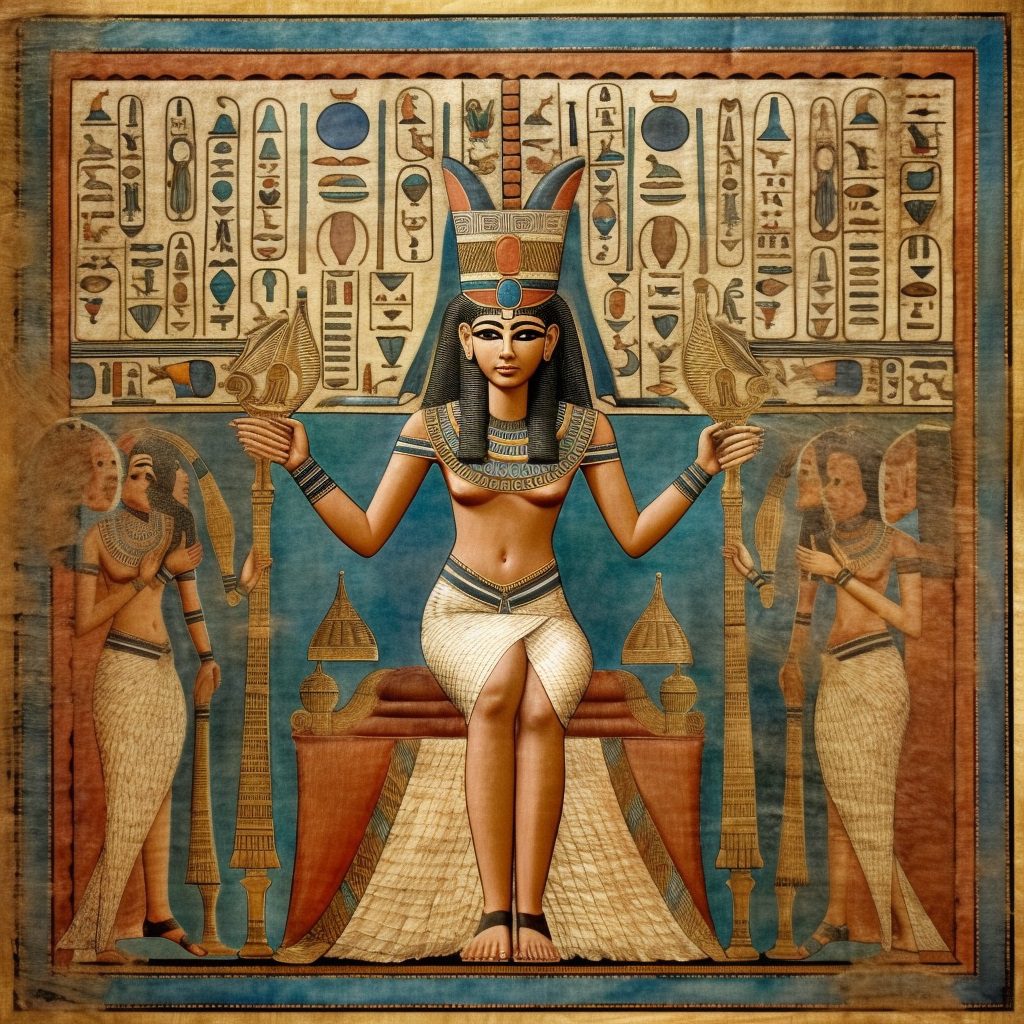
Importance in Understanding Egyptian Art
- Aesthetic Value: The bust of Nefertiti, crafted around 1345 BCE using painted stucco on limestone core technique, serves as a prime example showcasing the intricate skill level possessed by ancient Egyptian artists. Their ability to capture such lifelike expressions through stone continues to astound modern observers.
- Cultural Significance: As a queen who held considerable influence during her reign, Nefertiti’s bust highlights the importance of female figures in ancient Egyptian society. This iconic sculpture celebrates the grandeur and authority of Nefertiti, conveying her importance in ancient Egyptian society.
- Historical Context: The discovery of this masterpiece provides valuable insights into the Amarna Period, which was marked by significant religious and artistic shifts under Akhenaten’s rule. The portrayal of Nefertiti with such elegance and poise speaks volumes about how she was revered by her subjects.
Intriguingly, some scholars believe that there may be hidden messages within the bust itself. Recent studies have suggested that beneath its surface lies another face, possibly hinting at deeper complexities surrounding Queen Nefertiti and her time on the throne. The enigmatic nature of this artifact continues to captivate both experts and admirers alike, making it one of history’s most enduring mysteries.
Key Takeaway:
The bust of Nefertiti, discovered in 1912 by a German archaeologist, is an iconic symbol representing the beauty and power of Queen Nefertiti. This masterpiece serves as a prime example showcasing the intricate skill level possessed by ancient Egyptian artists and highlights the importance of female figures in ancient Egyptian society.
Marriage to Akhenaten
Although much about Queen Nefertiti’s early life remains unknown, we do know that she married Akhenaten, the second son of Amenhotep III. Together, they ruled over Egypt as a powerful couple and brought significant changes to their kingdom. They had six daughters.
Royal Family Dynamics During Their Reign
In an unprecedented display of love and devotion for the time, Nefertiti and Akhenaten were often depicted together in art, with each other, or with their children. This closeness was not only limited to visual representations; historical records suggest that they shared a deep bond throughout their reign. The royal family lived in the newly-built capital city of Amarna, where they broke away from traditional Egyptian religion by worshipping the sun god Aten exclusively. This bold move transformed Egypt into a monotheistic society during their rule.
Major Accomplishments Together as Rulers
- Akhetaten: Also known as Amarna, this new capital city built by Akhenaten and Nefertiti represented a break from tradition and served as the center of worship for Aten.
- Monotheism: Under their leadership, Egypt transitioned from polytheism to monotheism – worshipping one deity instead of many gods – which was considered revolutionary at that time.
- New Art Style: With Queen Nefertiti being regarded as one of history’s most beautiful women and having her own iconic bust, their reign saw the introduction of a unique artistic style called “Amarna art,” characterized by more naturalistic depictions of people, animals, and plants.
- Diplomatic Relations: The royal couple maintained diplomatic relations with other powerful nations such as Babylon, Assyria, and Mitanni. They exchanged gifts and letters, which can be found in the Amarna Letters, a collection of clay tablets that serve as an invaluable resource for understanding ancient diplomacy.
In spite of their accomplishments together, Nefertiti’s role in Akhenaten’s life remains shrouded in mystery. Some historians believe she may have been elevated to co-regent status during her husband’s later years or even ruled Egypt independently after his death. However, concrete evidence supporting these theories is yet to be discovered by archaeologists working tirelessly to uncover new leads regarding this enigmatic queen.
Key Takeaway:
Queen Nefertiti married Akhenaten and together they ruled over Egypt, introducing significant changes such as the transition from polytheism to monotheism. They built a new capital city called Amarna and introduced a unique artistic style known as “Amarna art.” Despite their accomplishments, Nefertiti’s role in Akhenaten’s life remains shrouded in mystery.
Rise to Power
Nefertiti ascended to a powerful status as the wife and queen consort of Akhenaten, becoming one of the most influential figures in ancient Egypt. Her role extended beyond ceremonial duties; she played an active part in shaping political decisions that impacted all aspects of Egyptian society.
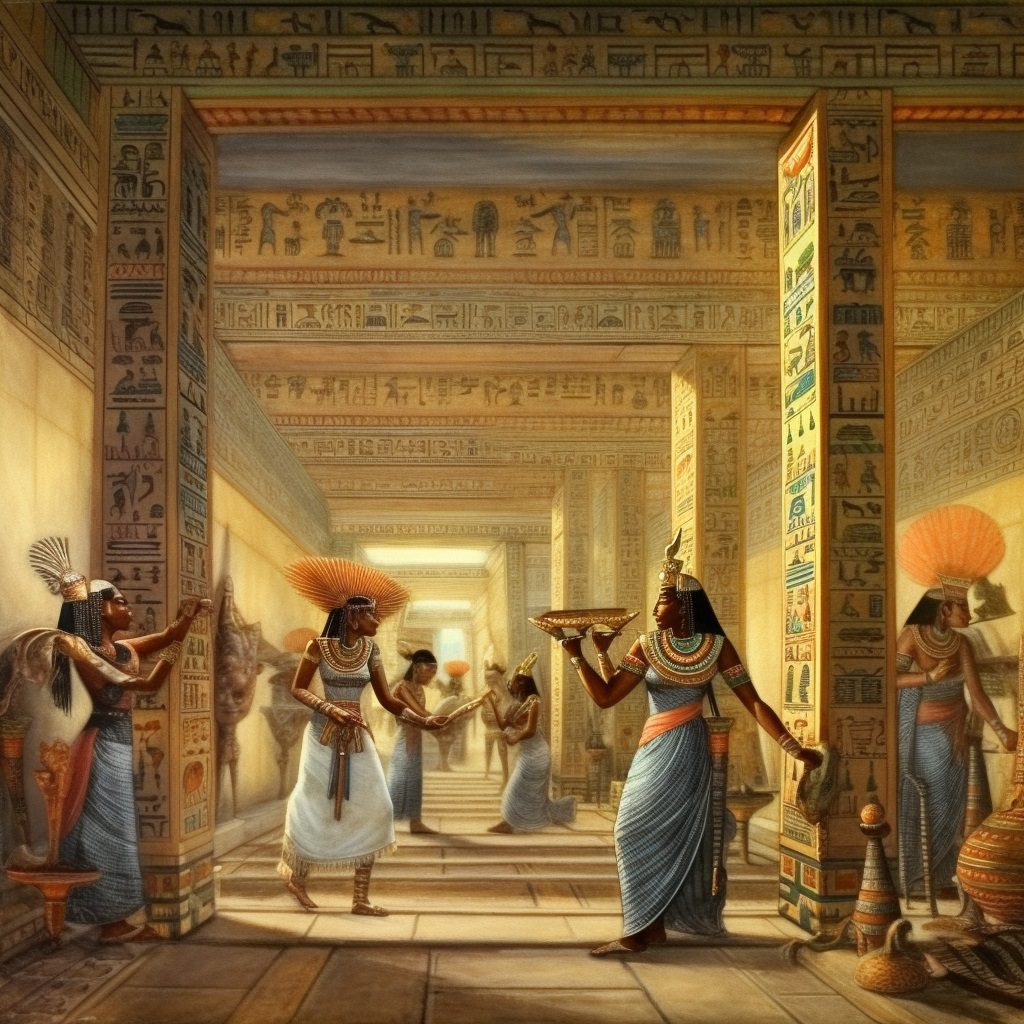
Examples showcasing her influence on policy-making
In a dramatic departure from tradition, Queen Nefertiti and her husband introduced Atenism, a monotheistic religion centered around the worship of Aten, the sun disk. This radical shift led to significant changes in religious practices and art during their reign. The couple even went as far as relocating Egypt’s capital city to Amarna, which was dedicated solely to Aten.
- Nefertiti is often depicted alongside her husband performing religious ceremonies or making offerings to Aten – a rare honor for queens at that time.
- The royal couple commissioned numerous temples devoted exclusively to Aten throughout their kingdom.
- Nefertiti actively participated in diplomatic relations with other nations, as evidenced by correspondence found among the Amarna Letters – an archive of clay tablets containing international communications between Egypt and its neighbors during this period.
Comparisons with other prominent queens from antiquity
Queen Nefertiti’s rise to power is particularly noteworthy when compared with other famous female rulers from ancient history:
- Cleopatra VII (69-30 BC) was a renowned ruler of ancient Egypt, known for her sharp intellect and political acumen. She forged alliances with Rome to maintain power but ultimately lost the kingdom after a tumultuous reign.
- Hatshepsut (1479-1458 BC) – One of the most successful female rulers in history, Hatshepsut ruled as regent for her stepson before proclaiming herself pharaoh. Her reign saw significant architectural achievements and an expansion of trade networks.
While Nefertiti’s accomplishments may not have been as grandiose as those of Cleopatra or Hatshepsut, her influence on Egyptian society during her time cannot be underestimated. As queen consort, she played a pivotal role in shaping religious practices and foreign policy decisions that would leave lasting effects on ancient Egypt long after her mysterious disappearance.
Key Takeaway:
Nefertiti, as Akhenaten’s wife and queen consort, played an active role in shaping political decisions that impacted all aspects of Egyptian society. She introduced Atenism, a monotheistic religion centered around the worship of Aten, and actively participated in diplomatic relations with other nations. Despite not being as grandiose as Cleopatra or Hatshepsut, her influence on ancient Egypt cannot be underestimated.
Mysterious Disappearance
Despite being such a well-known figure in history due to her beauty and power, the ultimate fate and location where Queen Nefertiti rests still remain unsolved. Archaeologists across Egypt are working tirelessly trying to uncover new leads regarding this mystery.
Theories surrounding her disappearance
Several hypotheses exist in an effort to elucidate the puzzling vanishing of Queen Nefertiti. One popular theory suggests that she may have changed her name to Smenkhkare after Akhenaten’s death and ruled as pharaoh for a brief period before Tutankhamun took over. Another possibility is that she fell out of favor with the royal court or was involved in a political coup, leading to her exile or execution.
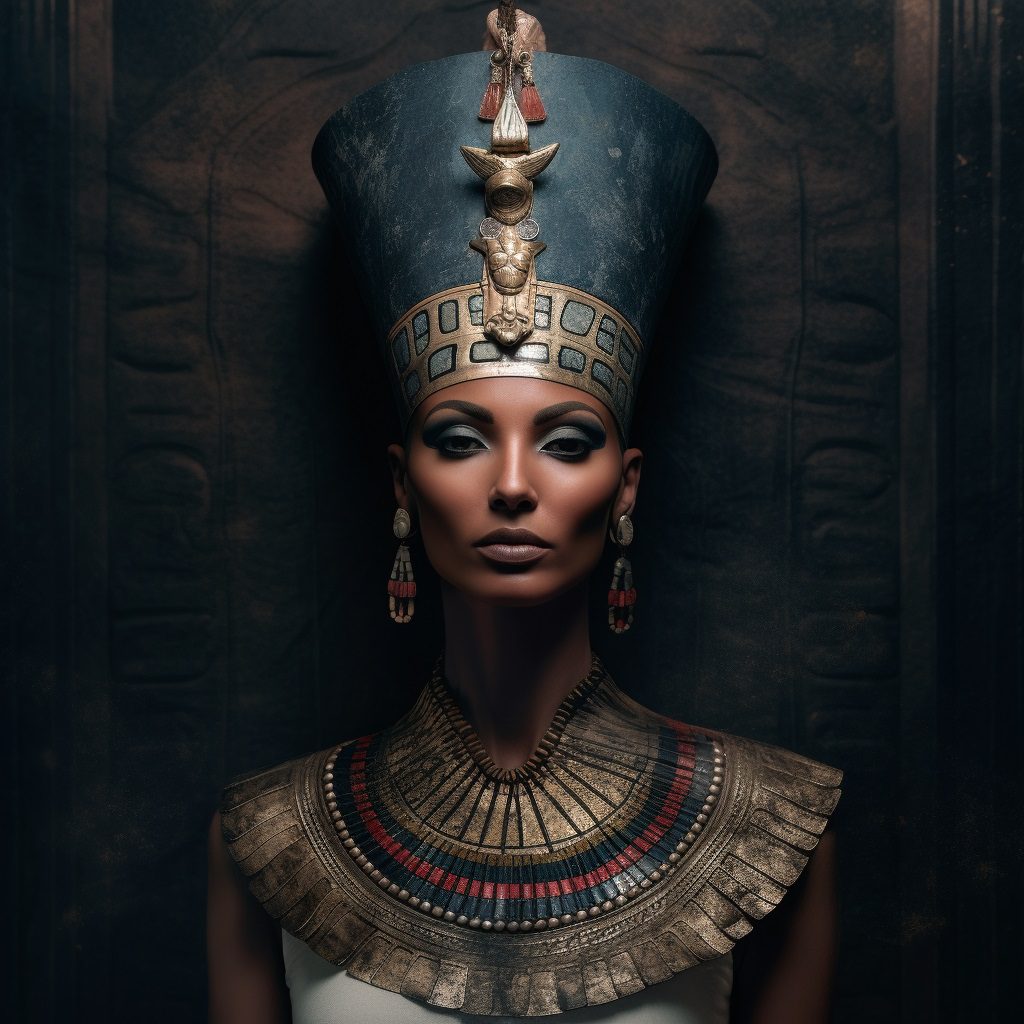
- Name change: Some historians believe Nefertiti assumed a new identity as Smenkhkare following Akhenaten’s demise.
- Fall from grace: A potential fallout with the Egyptian elite could have led to Nefertiti’s banishment or even death.
- Coup involvement: If implicated in an attempted overthrow of the ruling dynasty, it would be likely that Queen Nefertiti would face severe consequences.
The ongoing search for Nefertiti’s tomb
In recent years, archaeologists have made significant efforts in locating Queen Nefertitia€™s final resting place. In 2015, British Egyptologist Nicholas Reeves proposed that hidden chambers within King Tutankhamun tomb might contain evidence pointing towards his stepmother burial site. However, subsequent radar scans and excavations have yielded inconclusive results.
Another intriguing discovery came in 2018 when a team of archaeologists led by Dr. Zahi Hawass unearthed an ancient tomb near the Valley of the Kings, which they believed could be connected to Nefertiti. Although further research is needed to confirm this claim, it demonstrates that the quest for answers about Queen Nefertiti’s disappearance remains ongoing and captivating.
In spite of these efforts, Queen Nefertitia€™s fate continues to elude researchers and enthusiasts alike. Queen Nefertiti’s story has long captivated people with its enduring mystery and allure of ancient Egypt. With each new clue uncovered, we inch closer to unraveling the mystery behind this powerful queen who once ruled over one of humanity’s greatest civilizations.
Key Takeaway:
Archaeologists are still searching for the tomb of Queen Nefertiti, who disappeared under mysterious circumstances. Theories suggest she may have changed her name or been banished due to political reasons, but no conclusive evidence has been found despite recent excavations and radar scans.
FAQs in Relation to Nefertiti Mystery Egypt
What is the mystery of Queen Nefertiti?
The mystery of Queen Nefertiti revolves around her sudden disappearance from historical records and the location of her tomb. Despite being a prominent figure during her husband Akhenaten’s reign, there is little information about her later life and death, leading to various theories and ongoing searches for her final resting place.
What is the mystery surrounding Nefertiti’s life and death?
Nefertiti’s life remains enigmatic due to scarce documentation on her origins, family background, and eventual fate. Her unexpected disappearance from historical records fuels speculation about whether she died prematurely or assumed another identity as co-regent with Akhenaten or his successor.
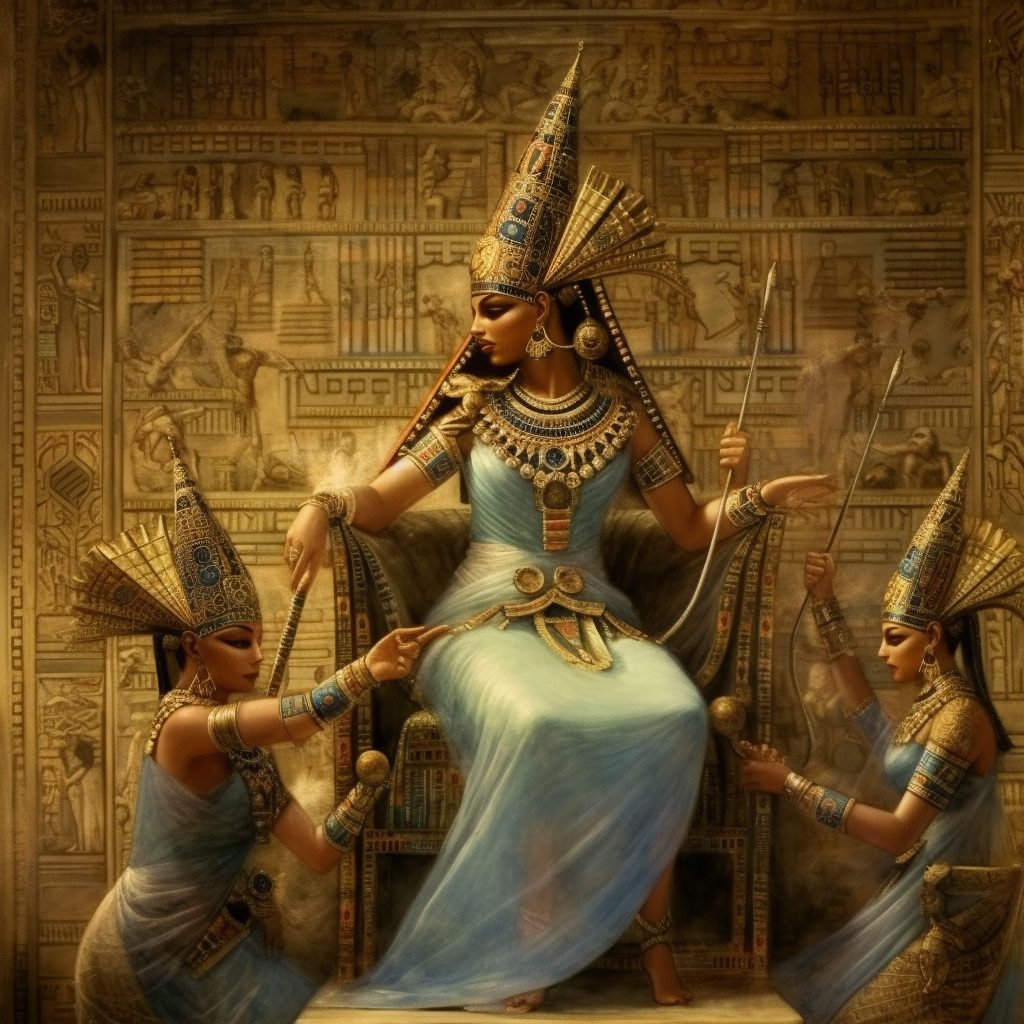
What are three facts about Nefertiti?
- Nefertiti was married to Pharaoh Akhenaten and played an influential role in Egypt’s religious revolution towards monotheism.
- The famous bust of Nefertiti, discovered in 1912, showcases Egyptian artistry at its finest during the Amarna period.
- Her capital city was called Akhetaten (now known as Amarna), which served as a center for worshiping their new god Aten.
Who was the mysterious queen of Egypt?
Queen Nefertiti, the wife of Pharaoh Akhenaten, has been dubbed “the mysterious queen” due to limited information regarding her origins, influence on policy-making decisions during their reign together, unexplained absence from historical accounts after year twelve of their rule, and uncertainty over where she might be buried.
Conclusion
Nefertiti Mystery Egypt has captivated the world for centuries. From her capital city to her famous bust, Nefertiti’s reign as queen alongside Akhenaten left a lasting impact on Egyptian history.
The ongoing search for her tomb and the theories surrounding her mysterious disappearance only add to the intrigue of this fascinating historical figure. Whether you’re a nature lover or an avid historian, exploring the mysteries of Nefertiti’s life and legacy is sure to be an unforgettable journey.





























































